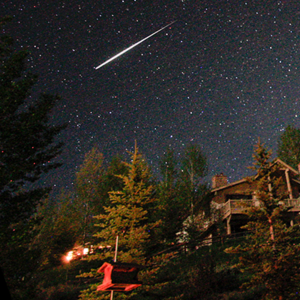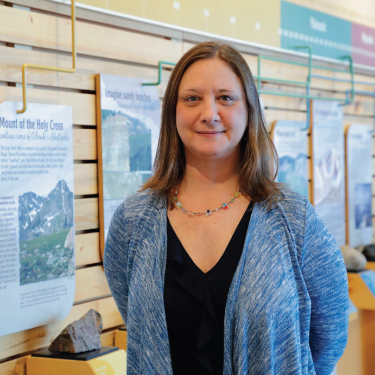 The coming of the winter solstice means that this Wednesday will be the shortest day of the year for those of us in the northern hemisphere. But the shortest day also means the longest night, and rather than mourn the short daylight, we can instead celebrate the mystery and beauty of a long winter night.
The coming of the winter solstice means that this Wednesday will be the shortest day of the year for those of us in the northern hemisphere. But the shortest day also means the longest night, and rather than mourn the short daylight, we can instead celebrate the mystery and beauty of a long winter night.
When I think of these astronomical milestones in the year, the solstices and the equinoxes, I can’t help but marvel at the immenseness of it all. I think about our planet, a tiny blue dot floating through space, governed by the pushes and pulls of gravity, centripetal force, inertia, and more. Thinking this broadly makes everything seem so fragile, as if a slight bump from some unknown cosmic giant could send us hurtling through space, away from the security of the sun’s warmth and light.
And so we are fortunate, all of us on this beautiful planet, for the balance and unity of the cosmos that allows us to have the energy and light of day juxtaposed by the dark silence of night. And while we usually revel in warmth and sunlight, on this day, we can bask in the splendor and glory of the night. During the day, we are blinded by the brilliance of the sun; but at night, we look skyward and see the moon circling above, and the distant stars, tiny dots of light that have traveled years to reach us. Imagine what that starlight might have seen on its journey through space, and the tales it might tell; if we only knew the language.
The infamous author Ed Abbey spoke of, “that lovely mysterious and awesome space,” and I can’t help but think he was referring to the quiet and sanctity of the night. There’s something almost cleansing about being out in the dark of night and breathing in the freshly chilled air. On a cloudless night, the stars seem endless, spreading out to the far reaches of the sky and alluding to the depth and mystery of the cosmos through their very presence. And in our happy valley, the absence of bright city lights means that we can see so much more of these stellar sparkles.
We think of our traditional, seven-day, 12-month calendar as the norm; but in reality, there are many ways that humans keep track of time. A new day officially begins at midnight, but many of us think of the dawn as the start of a day, and the dawn represents new beginnings and a fresh start. But to other cultures, a day begins with night, starting at sunset instead of sunrise. In many ways, the way that we define a day is largely arbitrary. Does it begin at midnight? At sunset? Or sunrise? In cultures that view sunset as the start of a day; thinking of a day as darkness followed by light reminds people that no matter how dark, or bad, things might get, that they will always be followed by the light. How do you view the world? Does darkness and sadness extinguish the light? Or does light and joy conquer darkness?
On this solstice, appreciate the dwindling daylight, but don’t miss this opportunity to find beauty in the night. The wilderness takes on a life of its own after dark, complete with sights and sounds unique to the nocturnal chorus. A venture on your favorite daytime trail after dark can take on a life all its own. Familiar trees look different in the moonlight, as shadows and branches intertwine to where you can't tell matter from shadow. Your senses become heightened as your night vision adjusts and your ears perk up with each distant hoot and howl. Even our sense of smell is heightened as we struggle to make sense of this strange new world of night.
The night is filled with wonder and awe. Just when you think you’ve seen and heard it all, there’s a new sound and a mysterious shadow above. The chorus of daytime birds and insects is replaced by the hum of nighttime creatures, and the world seems new and beautiful in a whole different way. The young Malala Yousafzai told us that, “We realize the importance of light when we see darkness.” Nighttime is part of the day, and it represents a whole new world of wonder, if only we take the time to explore it. Just don’t forget that, no matter how long the night, the daylight will come.
Jaymee Squires is the Director of Graduate Programs at Walking Mountains Science Center in Avon. She looks forward to the solstice each year and the gradual lengthening of days that follows it.









